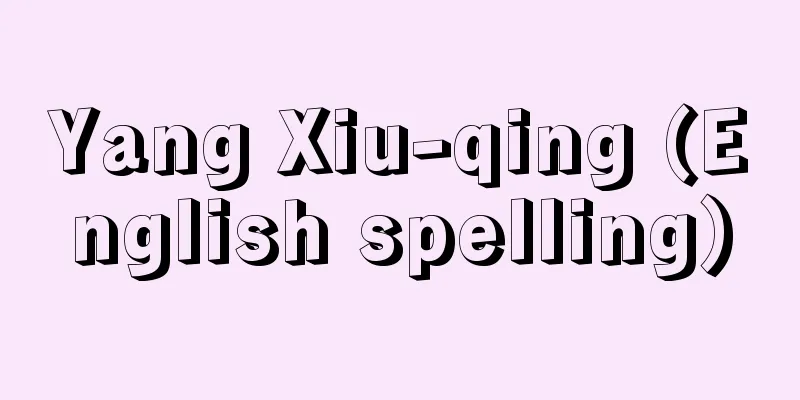Reinsurance - Saihoken

|
An insurer insures another insurer for part or all of the liability under an insurance contract that it has undertaken. For example, if an insurer undertakes a contract for 1 billion yen, it will retain 300 million yen of that and reinsure the remaining 700 million yen with another insurer. The insurer that issues the reinsurance is called the direct insurer or outgoing reinsurer, and the insurer that undertakes the reinsurance is called the reinsurer or underwriting reinsurer. Reinsurance is a method of risk diversification based on the unique characteristics of the insurance transaction itself, but while coinsurance is a horizontal division of risk, reinsurance is a vertical division of risk. In terms of the relationship with the policyholder, in coinsurance all insurers have a direct relationship with the policyholder, but in reinsurance only one insurer (direct insurer) has a direct relationship with the policyholder, and the other insurers (reinsurers) are in the background. In recent years, as the scale of the economy has expanded due to the development of production capacity, the amount of each direct insurance contract has become huge. As a result, the amount of facultative reinsurance issued as needed for each direct insurance contract has decreased, and it has become common to diversify risk by making a contract with a reinsurer in advance and automatically issuing treaty reinsurance for all underwriting that meets certain conditions. The ceding reinsurance treaties held by direct insurers essentially form a very large part of the direct insurance capacity. In addition, since the amount of insurance per case is less likely to be huge in life insurance than in non-life insurance, the use of reinsurance is generally less than in non-life insurance. [Takuji Kaneko] Source: Shogakukan Encyclopedia Nipponica About Encyclopedia Nipponica Information | Legend |
|
ある保険者が引き受けた保険契約上の責任の一部または全部について、さらに他の保険者に保険を付すること。たとえば、10億円の契約を引き受けた場合、そのうち3億円は自分で保有し、残り7億円は他の保険者に再保険する。再保険を出す保険者を元受保険者または出(しゅつ)再保険者といい、再保険を引き受ける保険者は再保険者または受(うけ)再保険者という。再保険は、保険取引そのもののもつ特殊性に基づく危険分散の方法であるが、共同保険がいわば危険の横の分割であるのに対して、再保険は危険の縦の分割である。対加入者関係においては、共同保険ではすべての保険者が加入者に対して直接の関係にたつが、再保険は一保険者(元受保険者)だけが加入者と直接の関係にたち、他の保険者(再保険者)は背後に位置する。近年、生産力の発展による経済規模の拡大につれて、個々の元受保険契約の金額も巨額化してきた結果、元受のつど必要に応じて再保険に出す任意再保険は少なくなり、あらかじめ再保険者と契約しておいて、特定の条件に合致した引き受けは、すべて自動的に再保険に出す特約再保険によって危険の分散をするのが常態になっている。元受保険者がもっている出再保険特約は、実質的に元受能力の非常に大きな部分を形成していることになる。なお、生命保険では損害保険に比べて1件当りの保険金額が巨額に上ることが少ないため、再保険の利用度も損害保険に比べて一般的に少ない。 [金子卓治] 出典 小学館 日本大百科全書(ニッポニカ)日本大百科全書(ニッポニカ)について 情報 | 凡例 |
>>: Cyborg - Cyborg (English spelling)
Recommend
Long-tailed mouse - Onagaji mouse
...It is found only in Japan and Jeju Island, and...
Vinča (English spelling)
… [Prehistoric to ancient times] During the Neoli...
Kumiya
One of the early wealthy merchants active in the e...
Ryunosuke Goto
Politician. Graduated from the law department of ...
Wei Zhongxian
A Chinese eunuch in the late Ming Dynasty. He was...
armatolós (English spelling)
…In mainland Greece, bandits called Kleftis were ...
Denkan - epilepsy
Chinese playwright. Born in Changsha, Hunan Provi...
Trace fossil - trace fossil
A fossil is a record of the life of various ancie...
Soap (English spelling)
A general term for metal salts of higher fatty aci...
History of Science
Science is divided into natural science and socia...
Ethyl vanillin
Vanilla essence is used as a flavoring agent. Sour...
Cattleya - Cattleya
A genus in the orchid family (APG classification:...
Strike - Uchimaki
〘 noun 〙① A method of offering. Scattering rice. I...
Udine (English spelling)
The capital of the province of Udine in the Friuli...
Collective Grave
…In western Europe, large numbers of human bones ...









